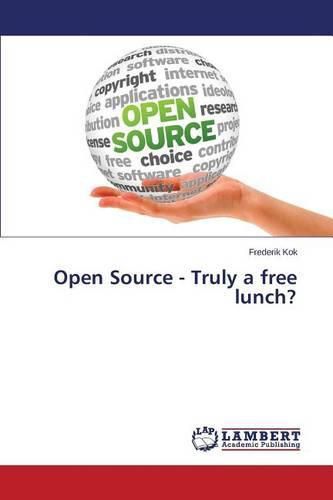Readings Newsletter
Become a Readings Member to make your shopping experience even easier.
Sign in or sign up for free!
You’re not far away from qualifying for FREE standard shipping within Australia
You’ve qualified for FREE standard shipping within Australia
The cart is loading…






This title is printed to order. This book may have been self-published. If so, we cannot guarantee the quality of the content. In the main most books will have gone through the editing process however some may not. We therefore suggest that you be aware of this before ordering this book. If in doubt check either the author or publisher’s details as we are unable to accept any returns unless they are faulty. Please contact us if you have any questions.
The study aims to provide IT decision-makers with information on the issues to consider when looking at open source from a value perspective when compared to commercial software. Software value-add should be considered through all the phases in the software life-cycle. The concept of the value chain should be the starting point to identify those aspects of the value chain that would benefit the most. Other initial considerations, such as risks involved in open source, should also be taken into account before deciding on the software to acquire. The concept of total cost of ownership can be applied to the software employed within an organisation - in other words, considering the costs involved in software from initial purchase through to support and maintenance. In this regard, both open source and commercial software offer different levels of cost in separate areas of the life-cycle. An informed decision regarding the complete software life-cycle enables the decision-maker to justify and substantiate the decision to go the open source or commercial software route - based on the value gained from the software through this life-cycle.
$9.00 standard shipping within Australia
FREE standard shipping within Australia for orders over $100.00
Express & International shipping calculated at checkout
This title is printed to order. This book may have been self-published. If so, we cannot guarantee the quality of the content. In the main most books will have gone through the editing process however some may not. We therefore suggest that you be aware of this before ordering this book. If in doubt check either the author or publisher’s details as we are unable to accept any returns unless they are faulty. Please contact us if you have any questions.
The study aims to provide IT decision-makers with information on the issues to consider when looking at open source from a value perspective when compared to commercial software. Software value-add should be considered through all the phases in the software life-cycle. The concept of the value chain should be the starting point to identify those aspects of the value chain that would benefit the most. Other initial considerations, such as risks involved in open source, should also be taken into account before deciding on the software to acquire. The concept of total cost of ownership can be applied to the software employed within an organisation - in other words, considering the costs involved in software from initial purchase through to support and maintenance. In this regard, both open source and commercial software offer different levels of cost in separate areas of the life-cycle. An informed decision regarding the complete software life-cycle enables the decision-maker to justify and substantiate the decision to go the open source or commercial software route - based on the value gained from the software through this life-cycle.